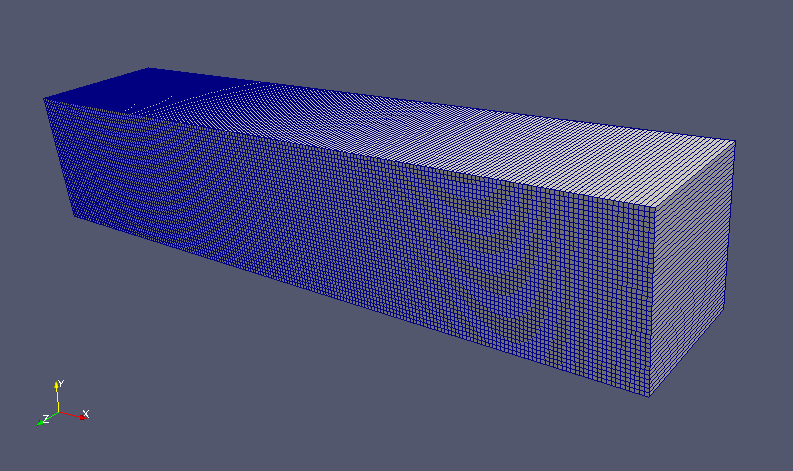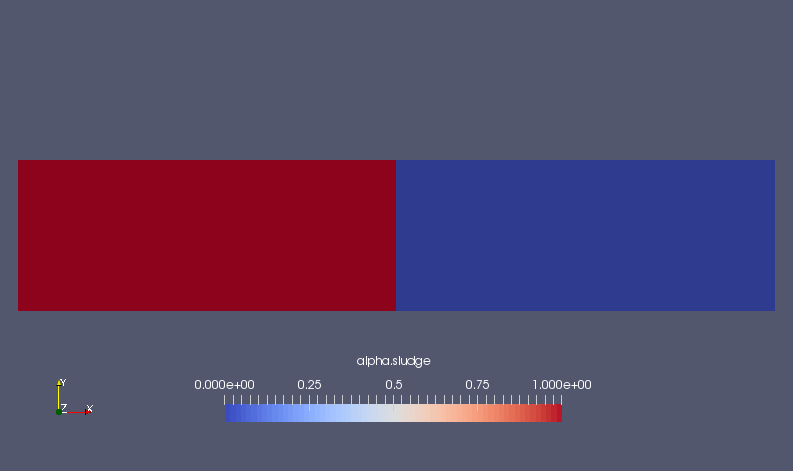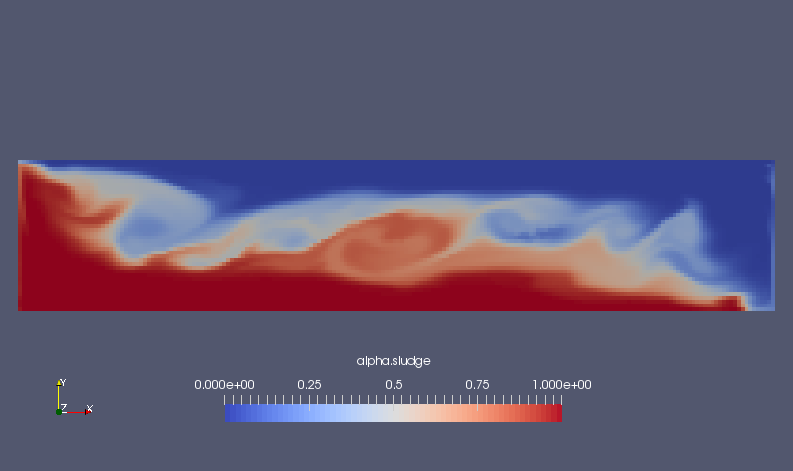Mixing of two types of liquids
Case directory
$FOAM_TUTORIALS/multiphase/twoLiquidMixingFoam/lockExchange
Summary
We calculate the mixing of two liquids that have different densities for 10 seconds. There is no inflow or outflow of fluid into the analysis domain, and the boundary wall is assumed to be a slip wall, and the calculation is performed as a two-dimensional problem with one mesh in the Z direction.
 Model geometry
Model geometry
The gravity acceleration is defined as the negative direction on the Y-axis in the file constant/g.
dimensions [0 1 -2 0 0 0 0]; value (0 -9.81 0);
The properties of each phase are set in the file "constant/transportProperties" as follows where nu is the kinematic viscosity (m2/s) and rho is the density (kg/m3).
Dab [0 2 -1 0 0 0 0] 1e-06;
alphatab [0 0 0 0 0 0 0] 1;
phases (sludge water);
sludge
{
transportModel Newtonian;
nu [0 2 -1 0 0 0 0] 1e-06;
rho [1 -3 0 0 0 0 0] 1000;
}
water
{
transportModel Newtonian;
nu [0 2 -1 0 0 0 0] 1e-06;
rho [1 -3 0 0 0 0 0] 990;
}
The meshes are as follows, and the number of mesh is 8000.
 Meshes
Meshes
The calculation result is as follows.
 Volume ratio of sludge at start time (alpha.sludge)
Volume ratio of sludge at start time (alpha.sludge)
 Volume ratio of sludge at end time (alpha.sludge)
Volume ratio of sludge at end time (alpha.sludge)
Commands
cd lockExchange
rm -rf 0
cp -r 0.orig 0
blockMesh
setFields
twoLiquidMixingFoam
paraFoam
Calculation time
53.43 seconds *Single, Inter(R) Core(TM) i7-2600 CPU @ 3.40GHz 3.40GHz